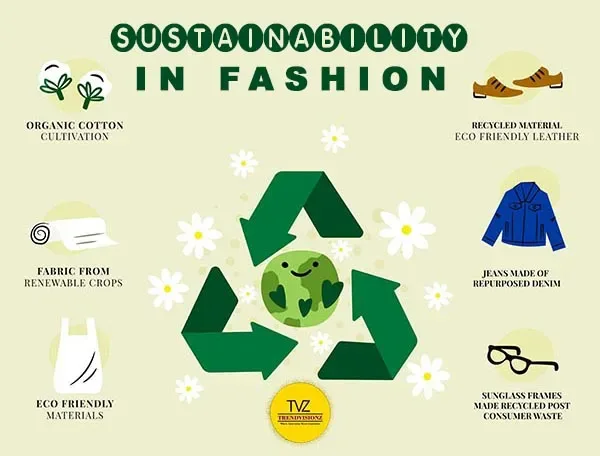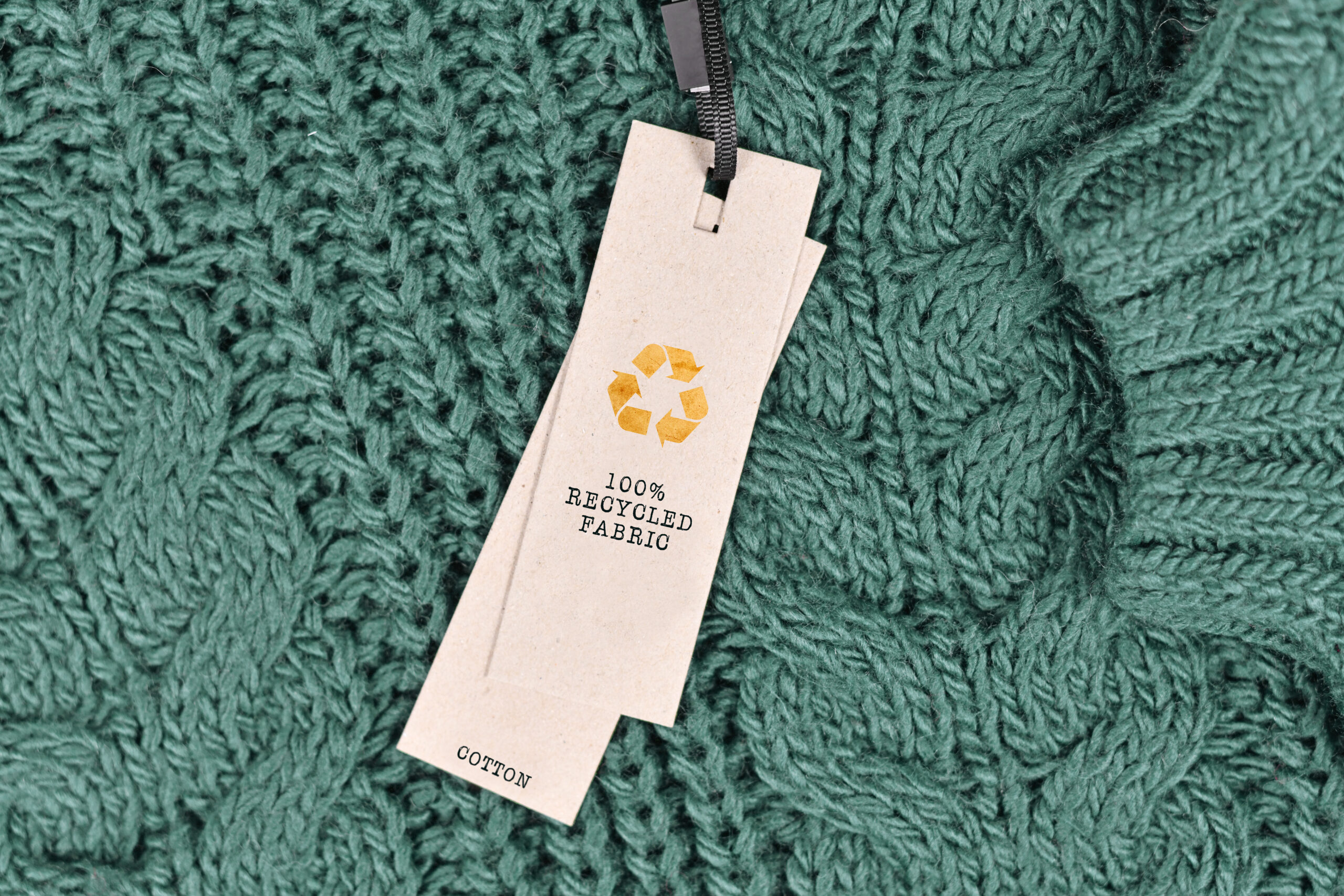The Foreseeable Future of Cape Town Sustainable Fashion in the Global Market
The Foreseeable Future of Cape Town Sustainable Fashion in the Global Market
Blog Article
Stay Ahead of the Curve by Checking Out Cutting-edge Style Fads
In a sector as vibrant as style, staying in advance involves even more than simply complying with existing trends-- it requires an expedition of innovation. The merging of technology and style advertises a new period of consumer engagement.

Accepting Smart Textiles
Recently, the garment industry has actually observed a transformative shift with the combination of clever fabrics, a cutting-edge innovation that mixes innovation with textile. This evolution represents not just a combination of appearances and capability yet also a substantial jump in the direction of sustainability and customization in vogue. Smart fabrics, also recognized as e-textiles, embed innovative electronic devices such as sensors and conductive strings within the material, enabling garments to connect with the user or the atmosphere.
These fabrics are developed to keep an eye on physical specifications, such as heart rate or body temperature, providing real-time health and wellness analytics. Beyond health and wellness applications, smart textiles are additionally being utilized for adaptive clothes, which can alter color or pattern in response to environmental stimuli, thus offering a vibrant style experience.
Furthermore, the development of energy-harvesting textiles that generate power from activity or sunlight is leading the way for self-dependent wearable innovation. This innovation is appealing to environmentally conscious customers and developers intending to lower the environmental footprint of fashion. As r & d in this field development, smart fabrics are expected to come to be increasingly widespread, reshaping the landscape of modern fashion with their multifunctional capacities.
The Increase of 3D Printing
Reinventing the manufacturing landscape, 3D printing has arised as a game-changer in the garment industry. This cutting-edge technology has actually allowed developers to push the borders of imagination, creating detailed and tailored garments that were previously inconceivable. By leveraging electronic layout and additive production, 3D printing promotes the development of complex geometries and patterns, allowing designers to trying out new appearances and structures.
A noteworthy benefit of 3D printing in style is its ability to generate on-demand, decreasing waste and minimizing supply needs. This efficiency not only maximizes production processes however additionally permits for quick prototyping, allowing developers to bring their visions to life in a much shorter timeframe. In addition, 3D printing supports personalization to a level unmatched by typical approaches, supplying personalized fits and distinct styles customized to private consumer choices.
The surge of 3D printing has actually likewise equalized style, making it available to arising designers that can currently produce top quality pieces without considerable monetary investment in traditional production facilities. As technology remains to advancement, the fashion industry is positioned to harness the complete capacity of 3D printing, discovering brand-new materials and techniques that will most certainly redefine just how fashion is developed and generated.
Sustainable Style Developments
As the apparel industry grapples with the pushing requirement for environmental obligation, sustainable fashion advancements have actually arised at the leading edge of transformative modification. The growing awareness of environmental influence has sustained a change towards more eco-conscious practices and materials. Brand names and developers are currently focusing on sustainability, including methods that reduce waste and minimize carbon footprints.
One significant advancement is the increase of circular style, which emphasizes recycling and upcycling to extend the lifecycle of garments. This method not only minimizes waste yet also encourages consumers to adopt an extra mindful method to apparel intake. In addition, the use of lasting materials, such as organic cotton, hemp, and recycled polyester, has gotten grip. These materials call for less water and power during manufacturing, significantly lessening ecological effect.
Another development hinges on the adoption of cutting-edge dyeing useful source methods that utilize all-natural dyes or waterless procedures, thereby decreasing the substantial quantities of water and chemicals typically used in fabric dyeing. Furthermore, innovations in biotechnology have resulted in the development of lab-grown natural leather and fabrics, supplying ecologically pleasant and cruelty-free options to traditional materials. Through these introducing efforts, the apparel industry is making purposeful strides in the direction of a much more lasting future.

Tech-Integrated Clothing
Tech-integrated garments stands for a groundbreaking combination of fashion and technology, improving exactly how people engage with their apparel. This cutting-edge domain name is marked by the inclusion of smart fabrics and embedded electronic components, boosting both performance and aesthetic charm. From health and fitness trackers installed in sports apparel to warmed jackets managed using mobile phone applications, tech-integrated clothing provides customers unmatched ease and flexibility.
Pioneering brand names are driving this pattern, focusing on creating garments that reply to environmental stimulations or customer commands. As an example, some garments can transform color or pattern in action to temperature level shifts, while others incorporate biometric sensors to keep track of health and wellness metrics like heart price or anxiety levels. The seamless integration of technology right into textiles also prolongs to ecological sustainability, with efforts to develop self-cleaning materials or garments that adapt to weather, thus reducing the demand for several layers.
Additionally, the advent of wearable modern technology is not simply limited to apparel however encompasses devices like watches and glasses, additional widening the extent of tech-integrated style. As the sector remains to innovate, the capacity for customization and personalization in clothing grows, supplying consumers special, tech-enhanced style experiences that accommodate their specific needs and choices.
Future of Virtual Fashion
In current years, the future of virtual style has become a transformative pressure check that within the sector, leveraging advancements in digital modern technology to redefine how fashion is developed, experienced, and eaten. By integrating increased reality (AR), online truth (VR), and 3D style tools, developers can currently craft immersive and interactive experiences that transcend standard fashion limits. Online style allows for the development of garments that exist entirely in digital atmospheres, supplying limitless opportunities for development without the restrictions of physical production.
This electronic change not just provides chances for imaginative expression however additionally addresses sustainability worries integral in conventional style methods. Cape Town Sustainable Fashion. By removing the demand for physical sources, online fashion minimizes waste and minimizes carbon footprints. Additionally, the rise of digital fashion aligns with the raising consumer need for personalized and one-of-a-kind experiences, as online garments can be customized and customized to individual preferences easily

Final Thought
The style sector's future lies in the combination of ingenious technologies and lasting practices. Virtual fashion is positioned to redefine consumer communications.
In current years, the fashion market has actually seen a transformative change with the combination of wise textiles, an advanced development that mixes technology with material.As the fashion market grapples with the pressing requirement for environmental obligation, lasting style technologies have arised at the center of transformative modification.In recent years, the future of online style has actually emerged as a transformative force within the sector, leveraging innovations in electronic technology to redefine just how style is created, experienced, and taken in. The rise of online style straightens with the increasing customer need for special and customized experiences, as online garments can be customized and tailored to private choices with ease.
The fashion sector's future lies in the integration of cutting-edge technologies and lasting practices.
Report this page